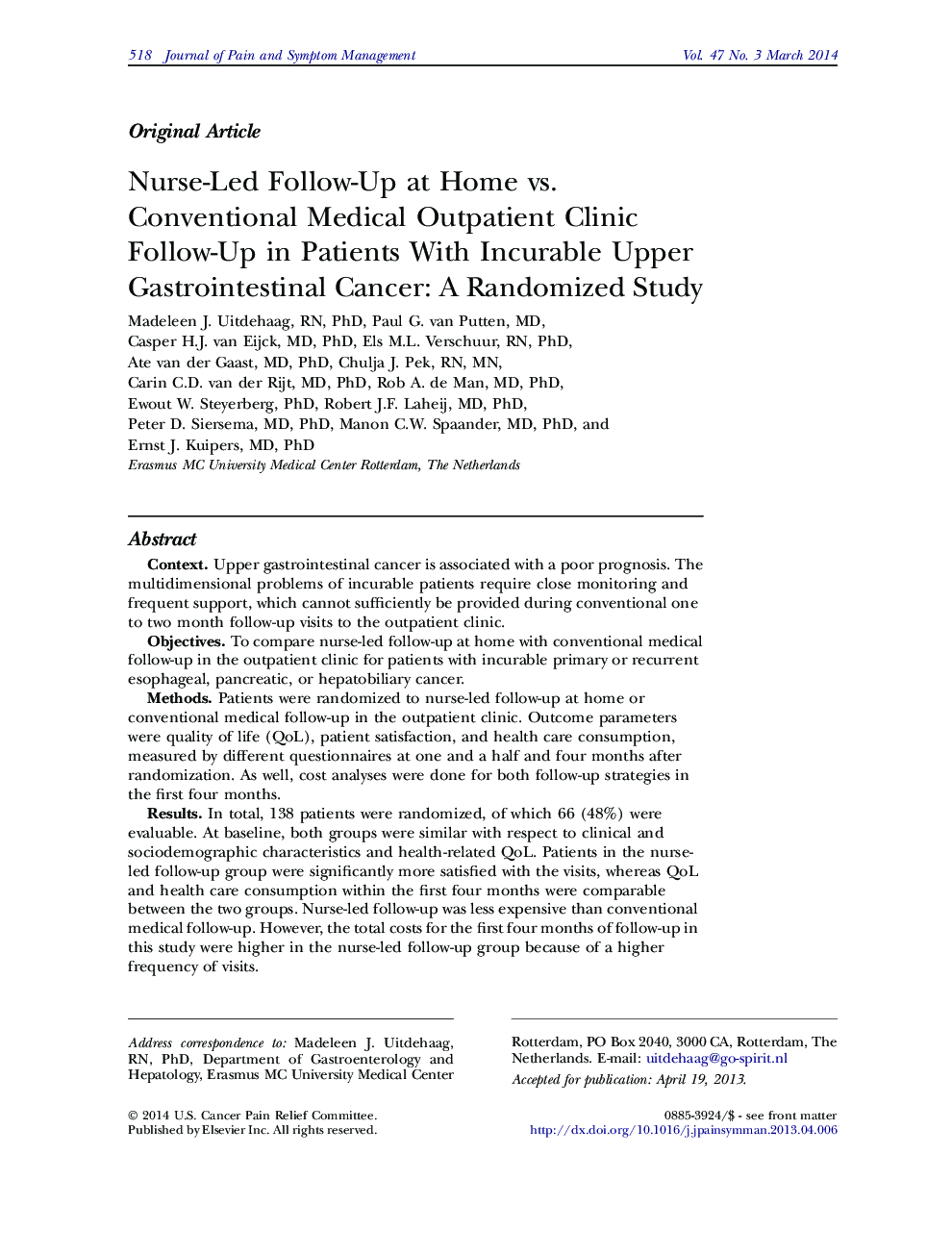| Article ID | Journal | Published Year | Pages | File Type |
|---|---|---|---|---|
| 2724231 | Journal of Pain and Symptom Management | 2014 | 13 Pages |
ContextUpper gastrointestinal cancer is associated with a poor prognosis. The multidimensional problems of incurable patients require close monitoring and frequent support, which cannot sufficiently be provided during conventional one to two month follow-up visits to the outpatient clinic.ObjectivesTo compare nurse-led follow-up at home with conventional medical follow-up in the outpatient clinic for patients with incurable primary or recurrent esophageal, pancreatic, or hepatobiliary cancer.MethodsPatients were randomized to nurse-led follow-up at home or conventional medical follow-up in the outpatient clinic. Outcome parameters were quality of life (QoL), patient satisfaction, and health care consumption, measured by different questionnaires at one and a half and four months after randomization. As well, cost analyses were done for both follow-up strategies in the first four months.ResultsIn total, 138 patients were randomized, of which 66 (48%) were evaluable. At baseline, both groups were similar with respect to clinical and sociodemographic characteristics and health-related QoL. Patients in the nurse-led follow-up group were significantly more satisfied with the visits, whereas QoL and health care consumption within the first four months were comparable between the two groups. Nurse-led follow-up was less expensive than conventional medical follow-up. However, the total costs for the first four months of follow-up in this study were higher in the nurse-led follow-up group because of a higher frequency of visits.ConclusionThe results suggest that conventional medical follow-up is interchangeable with nurse-led follow-up. A cost utility study is necessary to determine the preferred frequency and duration of the home visits.
